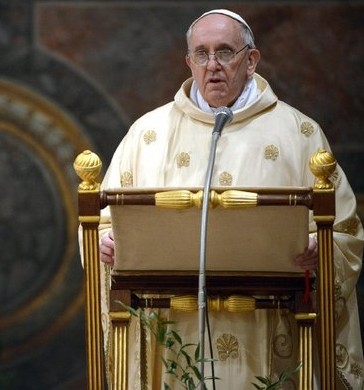
When Pope Benedict XVI resigned in February 2013, there was much scrabbling by journalists to establish when last a pope resigned voluntarily. After a bit, they came up with the correct answer. It was in 1294, when the elderly hermit Pietro of Murrone, who had been elected as Celestine V after a two-year deadlock, abruptly resigned after five months and went back to being a hermit, a life he evidently preferred. But Celestine V was remarkable for two things, of which his resignation was but one. The other was his enforcement of the conclave. That distant event has decisively shaped the procedure for electing popes. To see why, we need to understand a lesson from social choice that papal electors learnt the hard way: the trade-off between stability and decisiveness.
What we now know as the fundamental problem of voting theory was discovered by the Marquis de Condorcet in 1785: whenever there are at least three voters and at least three options, the cyclical majority, A > B > C > A (where > means “wins a majority against”), is always possible. That means that the will of the majority, the general will, may simply not exist. Celestine’s contemporary Ramon Llull (c1235-c1315) may have an inkling of this problem. But Llull was regarded in his time as an incomprehensible mathematician-mystic, and his (actually wise and visionary) voting procedures were not used in 1294.
Christian theology required the guidance of the Holy Spirit. If everyone could recognise it, the pope would be elected unanimously. Unfortunately, whenever the Holy Spirit advised different people differently, there were frequent disputes about who the true pope was: typically then, either the Holy Roman Emperor or whichever faction of Italian nobles was currently on top of Roman politics could step in and take control. From the mid-ninth to the mid-tenth century, out of twenty-six popes, twelve were removed from office, five sent into exile, and five killed. Religious autonomy required a choice rule that was more realistic than unanimity. The idea of requiring a 2/3 majority appeared during the Third Lateran Council in 1179. Eight centuries later, it was proved that two-thirds is close to a “sweet spot”, where, under normal conditions, Condorcet cycles are impossible. If you require unanimity, a single hold-out can veto any decision. A simple majority has the opposite problem: a single switch (or at most two) delivers a different majority, and cycles may lurk in the background.
But assembling a 2/3 majority still took time. In our paper celebrating Celestine V, Josep Colomer and I listed some of the succeeding dramas. For instance, in 1241, the senator of Rome confined the cardinals to an old, unhygienic building and forced a decision by threatening to have the corpse of the dead pope exhumed and shown publicly in full regalia. After another election lasting more than two years (1268-70) without an agreement, the public besieged the cardinals in the episcopal palace, removing the roof and allowing nothing but bread and water to go inside.
Most popes enjoy the job. They emerge from a college of cardinals, who enjoy that job too. So they have no incentive to make their lives harder or less luxurious. Celestine V was different. He was dragged from his hermit’s cell to become a reluctant pope. Both of his two revolutionary acts reflect this utility function. By resigning, he showed that it was possible to give up everything, as Christian monks and ascetics have always insisted: not a lesson that those who enjoyed the material benefits of the papacy (notably his successor Boniface VIII, who tried to erase Celestine’s memory) wanted to disseminate. By reinstating the conclave, which had lapsed, Celestine brought decisiveness into the election. Conclave just means “with key”. It means the regime demanded by the furious Roman mob in 1268-70. The cardinals are locked up without access to treats (then, sumptuous food; now, mobile phones) until they come to a decision. That gives them a powerful incentive to find someone who can command the magic 2/3 majority. In 2013, they did so without having to be reduced to a diet of bread and water.
The issues around the selection of a pope are multidimensional. Should he be a theological liberal or conservative? Should he be economically on the left or the right (an entirely different question)? Should he be Italian, or anything-but? Multidimensionality makes Condorcet cycles possible. It certainly exists, as proved in 1978. A conclave elected John Paul I, an Italian liberal who died after 33 days in office. An essentially identical conclave then elected John Paul II, a Polish conservative. That switch proved that opinion was multidimensional. But the wisdom of Celestine V, who is patronisingly treated as a bumbling simpleton by sources such as the Catholic Encyclopaedia, enabled the Catholic Church to ride out that crisis: and, in Pope Francis, to elect, quite quickly, somebody who is obviously utterly different to his predecessor.
Longer versions of this argument appear in the Los Angeles Times and (with Josep Colomer) in the Journal of Interdisciplinary History.




No Comment